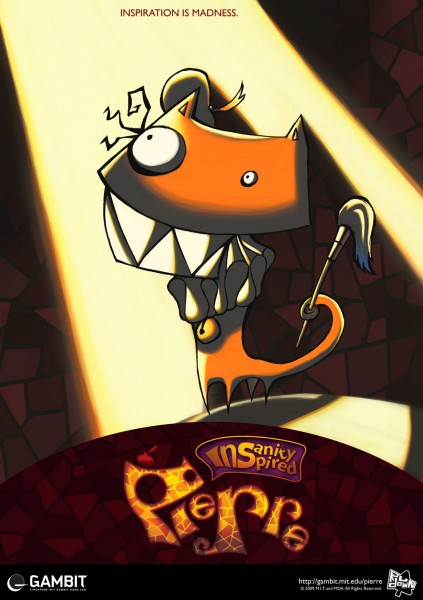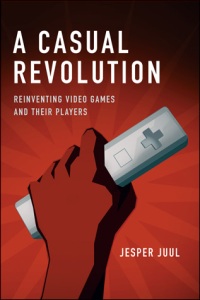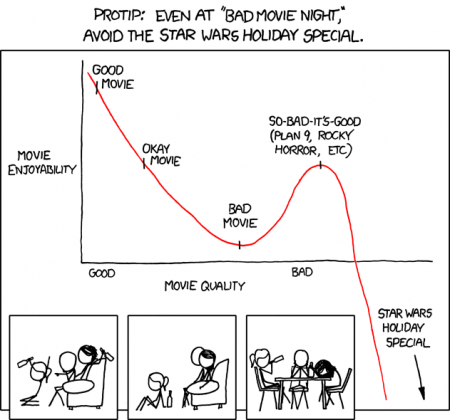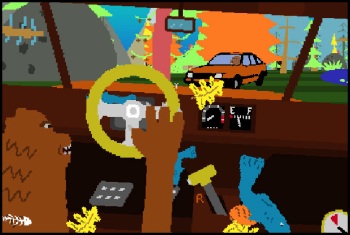I believe that games can help you consider ethical dilemmas, but it requires that the player takes the game seriously as such, rather than simply optimizing …
(Via the Rampant Coyote.)
My name is Jesper Juul, and I am a Ludologist [researcher of the design, meaning, culture, and politics of games]. This is my blog on game research and other important things.
I believe that games can help you consider ethical dilemmas, but it requires that the player takes the game seriously as such, rather than simply optimizing …
(Via the Rampant Coyote.)
In time to satisfy our late-October theory cravings, Eludamos maintains a good publication velocity and now brings us a new issue, volume 3, issue 2.
| Doubly Real: Game Studies and Literary Anthropology; or, Why We Play Games | Abstract HTML PDF |
| Philipp Schweighauser | 115-132 |
| Generations and Game Localization | Abstract HTML PDF |
| Darshana Jayemanne | 135-147 |
| Video Game Genre, Evolution and Innovation | Abstract HTML PDF |
| Dominic Arsenault | 149-176 |
| Generations of Game Analytics, Achievements and High Scores | Abstract HTML PDF |
| Ben Medler | 177-194 |
| Fahrenheit and the premature burial of interactive movies | Abstract HTML PDF |
| Jonathan Lessard | 195-205 |
| Chopin’s Dream as Reality: A Critical Reading of Eternal Sonata | Abstract HTML PDF |
| Johansen Quijano-Cruz | 209-218 |
| Letter from the Wilderness | Abstract HTML PDF |
| Mark Mullen | 219-244 |
| Just Gaming: On Being Differently Literate | Abstract HTML PDF |
| Alex Kendall, Julian McDougall | 245-260 |
| An Analysis of Persistent Non-Player Characters in the First-Person Gaming genre 1998-2007: a case for the fusion of mechanics and diegetics | Abstract HTML PDF |
| Dan Pinchbeck | 261-279 |
| Playing with one’s self: notions of subjectivity and agency in digital games | Abstract HTML PDF |
| Alec Charles | 281-294 |
| Repelling the Invasion of the “Other”: Post-Apocalyptic Alien Shooter Videogames Addressing Contemporary Cultural Attitudes | Abstract HTML PDF |
| Ryan Lizardi | 295-308 |
| Ten years later | Abstract HTML PDF |
| Gerit Götzenbrucker, Margarita Köhl | 309-324 |
 From the not-so-casual department, here is a new game, Pierre: Insanity Inspired.
From the not-so-casual department, here is a new game, Pierre: Insanity Inspired.
Pierre was created at my previous workplace, the Singapore-MIT GAMBIT Game Lab.
I functioned as a product owner on this game, which at GAMBIT means that I posed a research question that the game should answer.
Research question: How do different ways of communicating failure influence the player’s experience and performance?
The excellent team was then free make a game (more or less) within the constraints of that research question. You can play the game here.
For more about the creation of the game, have a look at the GAMBIT updates this week. Introduction video here.
As usual when I am posting games for research purposes, I will keep the further details close to the vest, and then post results later.
In the meantime, please play the game! Thanks!
A Casual Revolution: Reinventing Video Games and Their Players has just been published by MIT Press.
 A Casual Revolution is my take on what is happening with video games right now:
A Casual Revolution is my take on what is happening with video games right now:
A Casual Revolution is a 256-page book about what is important: The joy of the casual video games that we play during a work break, on phones, with the family, or with friends at a late-night party.
The book includes 100 illustrations as well as interviews with game players and developers.
Get A Casual Revolution from your neighborhood bookstore or from your favorite online retailer.
The book’s companion website is: http://www.jesperjuul.net/casualrevolution/
The official MIT Press page: http://mitpress.mit.edu/catalog/item/default.asp?ttype=2&tid=11844
Thanks to everybody who made this book possible!
-Jesper
As if it was response to my earlier discussion of paragaming (the enjoyment of bad games), XKCD posts this commentary:

Good question how that translates to games! Having watched the Star Wars Holiday Special, I agree with the sentiment even if I do feel my having watched it gives me a kind of positive cultural capital.
The Big Rigs game that Jason discussed at our bad games panel is clearly as bad as to be on the very far right end of the graph in the drawing – but it’s nevertheless enjoyable as a paragame. So the question may not be how far along the game is on a “good/bad” scale, but about having a sufficient number of laughable moments pr. minute. A laughable moment, I think, involves open conflicts between the contents of a “bad” game and the game quality criteria we operate by.
A game level that is 50% too long is not enjoyably bad, but a game level that is 500% too long is. A bad game has to be much too much to be useful for paragaming!
For your theory pleasure, the proceedings from the DiGRA 2009 conference at Brunel this September are now available online.
A must-read if you are interested in what’s happening in video game studies right now. (Hint: Many different things at the same time!)
Over the summer, I finally succumbed to peer pressure and got myself an iPhone.
As a game platform, I find it interesting not for the high-budget games like Super Monkey Ball (disappointing) or Hero of Sparta (yawn), but for the strange off-beat games.
 Take, for example, Enviro-Bear. You have forgotten to prepare for winter and must collect food and get back to your cave before winter comes. In a car. Avoiding the other cars, also driven by bears.
Take, for example, Enviro-Bear. You have forgotten to prepare for winter and must collect food and get back to your cave before winter comes. In a car. Avoiding the other cars, also driven by bears.
There is something to be said for the pairing of the slick hardware of the iPhone with the crude graphics of a game like this. Nintendo probably wouldn’t have approved this on the DS.
The app store is great in making such content accessible on your phone, but it has two major issues:
1) Organization: The in-phone app store remains pretty crude by being organized around top seller lists. This strongly favors hits, pushes prices to the bottom, and makes it harder to sell niche content. A simple fix would be to integrate an Amazon-style recommendation system. Then I could be recommended games that I would actually enjoy rather than forking out money for the next Hero of Sparta.
2) Fear of Objectionable Content: A string of app rejections. For example, Trent Reznor’s app rejected due to “objectionable content” (the F-word as they say here). Of course, you can buy “objectionable” songs (the same song in fact) on iTunes, so this is a simple double standard.
Why assume that games (and applications) should never be objectionable?
We understand, and Apple understands, that media may have content that is objectionable to some people. In music. In books. In art. Film. But video games are still being hampered by the strange idea that they, somehow, should be the only clean and non-objectionable art form in existence. This shows up in Apple’s rejections. It shows up in the fact that the platform holders continue to decide what is published. It shows up in the fact that Australia does not have a mature rating for video games.
And yes, I do think it is holding video games back, as an art form.
Ryan Wiancko from IndustryBroadcast has once again been so kind as to provide a podcast for a paper of mine.
This time it’s Introduction to Game Time – An examination of game temporality, which was published in the First Person anthology and subsequently included in Half-Real in revised form. (The paper is also known as “Time to Play”, which I find is the better title.)